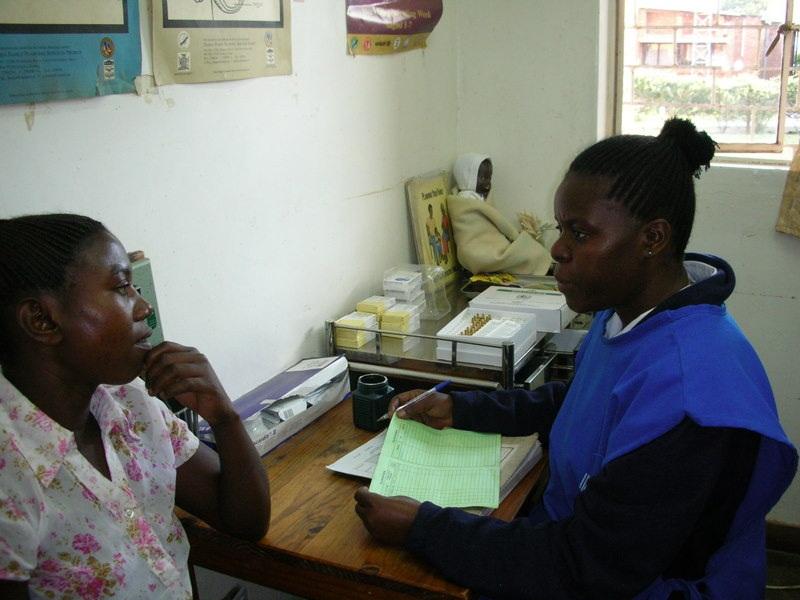Understanding Male Fertility Preferences in Zambia
- Parents
- Men and boys
- Sexual and reproductive health
- Women’s/girls’ decision-making
- Information
- Community-driven development
Recent evidence suggests that access to contraceptives may improve economic outcomes and reduce poverty by allowing women to optimally time births, increasing investment in education and participation in the labor market at childbearing ages. Male involvement is a growing trend in reproductive health, but it has the potential to do more harm than good if men oppose contraceptive use due to misinformation or personal biases. Researchers in Zambia evaluated the impact of teaching husbands about the dangers of maternal mortality on their acceptance of family planning methods.
الموضوع الأساسي
As much as 75 percent of all pregnancies worldwide are unplanned or unwanted, accounting for nearly 300,000 new pregnancies every day.1 The ability to control fertility can have broad social and economic consequences since families experiencing unwanted pregnancies may find it harder to pay for their children's education, healthcare and general wellbeing. Recent evidence suggests that access to contraceptives may improve economic outcomes and reduce poverty by allowing women to optimally time births, increasing investment in education and participation in the labor market at childbearing ages. There are also direct consequences for individual well-being: significant reported need for contraceptives suggests that people are having more children than they desire in many parts of the developing world. One possible reason is that in many countries men dominate decisions regarding sexual relations and contraception, and spousal discordance may influence fertility outcomes.
Male involvement is a growing trend in reproductive health, but has the potential to do more harm than good if men oppose contraceptive use due to misinformation or personal biases. A past study found that women were less likely to seek family planning services if their husbands were present when the services were offered, implying that unmet need for fertility and excess fertility may reflect underlying differences between partner preferences. However, because survey responses indicated that family planning was primarily being used for child spacing, rather than controlling total family size, male preferences may be malleable if they are educated on the adverse health effects of bearing multiple children close together without adequate time for the mother's recovery.
سياق التقييم
Zambia currently holds one of the world's highest maternal mortality ratios, with 729 maternal deaths per 100,000 live births,2 and a similarly high infant mortality ratio with 92 deaths per 1,000 live births.3 Family planning and reproductive health services are not uniformly available throughout the country, and 60 percent of currently pregnant women in Lusaka report that the pregnancy was unwanted. Although 100 percent of women reporting unwanted pregnancies report being familiar with at least one method of modern contraception, including pills, condoms, injectable contraceptives, and contraceptive implants, only 48 percent of women have ever used any modern method of contraception, and only 37 percent currently use modern contraceptives. This study is a follow-up to a two year study in 2007 that found that women were less likely to seek family planning services if their husbands were present when the services were offered.

معلومات تفصيلية عن التدخل
This study investigated potential avenues to involve male partners in family planning decisions, both by understanding the origins of male preferences and designing educational measures to better inform them about the importance of family planning. By providing information on the increased risk of maternal mortality when a woman has children too close together, this program aims to increase male acceptance of family planning, and therefore improve the ability to involve males in health decisions without risking female health.
Approximately three-quarters of the couples were randomly assigned to one of three intervention groups, while the rest served as a comparison group. One group of couples received information on family planning and maternal health in a one-on-one setting. This included information on the risk of maternal mortality and morbidity, how it grows with age and number of children, its causes, and how family planning can be used to help women by spacing births and reducing family size. A second group received this information through community meetings. A third intervention group received the information on family planning both one-on-one and in a community meeting. All participants were asked to sign up for a family planning consultation following the educational session. The comparison group was asked to answer a survey and to sign up for a family planning counseling session. The participants' take up of the family planning consultation and subsequent demand of and attitudes toward family planning were used to measure each intervention's success. Contraceptive use and fertility outcomes were monitored through clinic data. Couples were also be surveyed again after one year to measure subsequent fertility and stated preferences for children and for family planning.
النتائج والدروس المستفادة بشأن السياسات
Results forthcoming.
